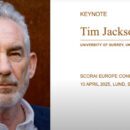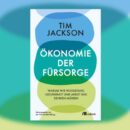Tim Jackson, Ben Gallant and Simon Mair
CUSP Working Paper Series | No 37
Summary
This working paper describes an extension of the stock-flow consistent FALSTAFF model originally developed by Jackson and Victor (2015) to test the existence of a monetary growth imperative. The extension described here is designed to simulate the phenomenon known as Baumol’s Cost Disease which arises from the existence of differential labour productivity rates in a mixed economy. Sectors with lower productivity growth find themselves penalised by rising wage costs which cannot be offset by technological productivity gains. Depressed wage rates for workers and reduced profit margins for investors threaten to unleash both social and financial unsustainability. Nonetheless, this part of the economy, which includes activities such as care, craft and creativity, is central to the pursuit of human wellbeing and critical in the transition to a sustainable prosperity. This paper first describes the extensions to the FALSTAFF model. These are principally the division of the firms sector into two sectors ‘fast’ and ‘slow’ with differential labour productivity rates, the introduction of an input-output structure to simulate interactions between the two sectors, and the elaboration of a relative pricing structure. It then illustrates the use of the extended model through a series of scenarios: 1) to reproduce the stationary state achieved in the original FALSTAFF model; 2) to demonstrate the Baumol effect; 3) to simulate a transition to a more service-based economy and 4) to test some other innovations attributable to a postgrowth transition. The final section reflects on the limitations and uses of the model and points in the direction of future work.
The full working paper is available for download in pdf (3.1MB).
Citation
Jackson T, Gallant B and S Mair 2023. Towards a Model of Baumol’s Cost Disease in a Post Growth Economy—developments of the FALSTAFF stock-flow consistent (SFC) model. CUSP Working Paper No. 37. Guildford: Centre for the Understanding of Sustainable Prosperity.
This post also appeared on the CUSP website. Image © istock.com/La Cassette Bleue





